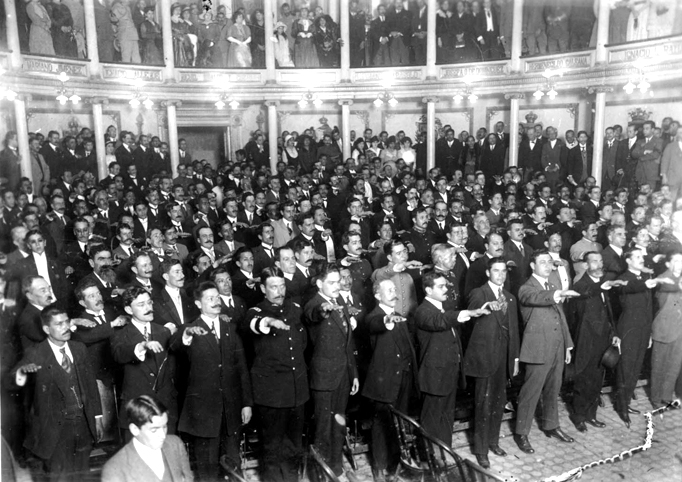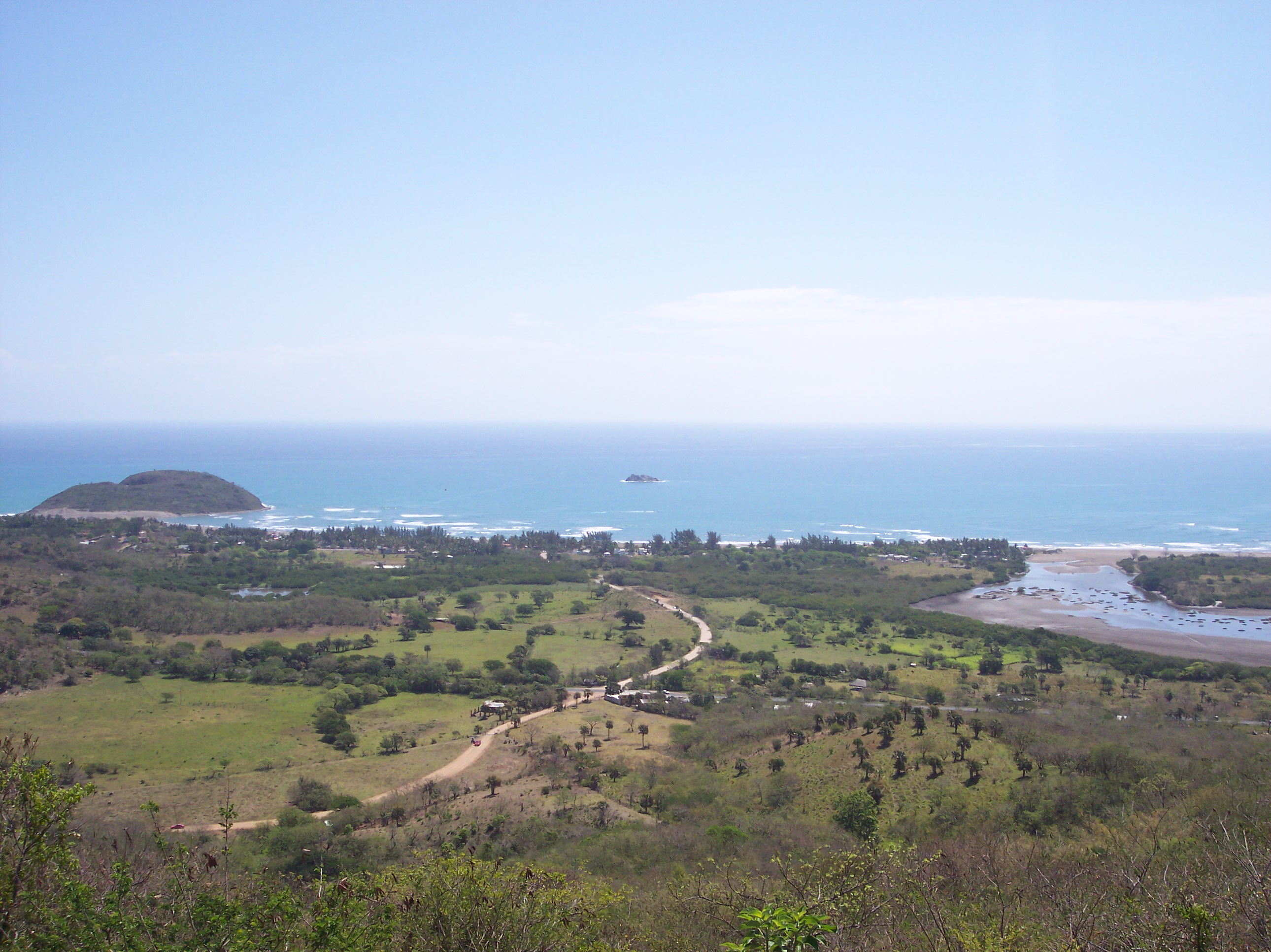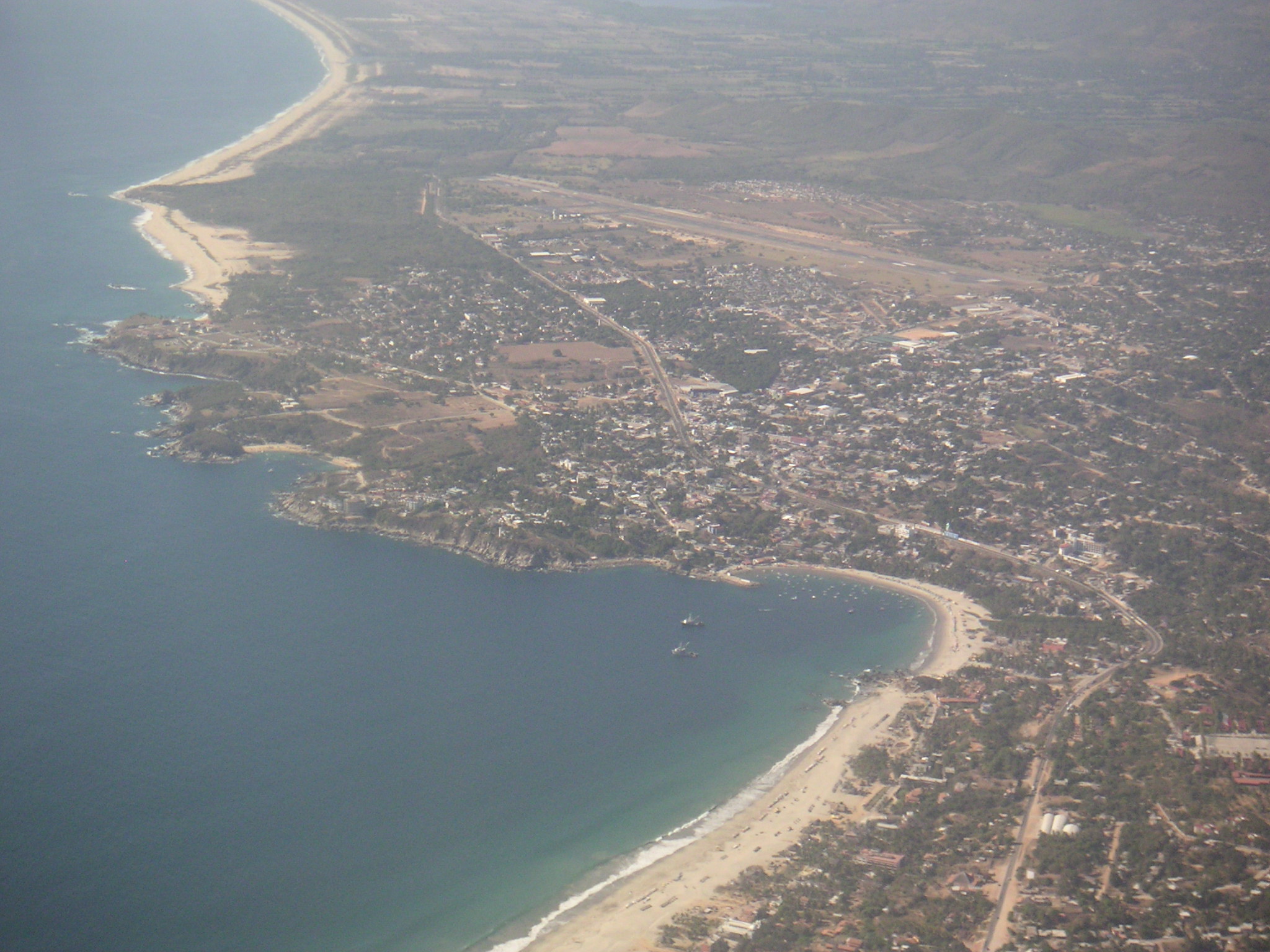|
Afro-Mexican
Afro-Mexicans (), also known as Black Mexicans (), are Mexicans of total or predominantly Sub-Saharan African ancestry. As a single population, Afro-Mexicans include individuals descended from both free and enslaved Africans who arrived to Mexico during the colonial era, as well as post-independence migrants. This population includes Afro-descended people from neighboring English, French, and Spanish-speaking countries of the Caribbean and Central America, descendants of enslaved Africans in Mexico and those from the Deep South during Slavery in the United States, and to a lesser extent recent migrants directly from Africa. Today, there are localized communities in Mexico with significant although not predominant African ancestry. These are mostly concentrated in specific communities, including populations in the states of Oaxaca, Michoacán, Guerrero, and Veracruz. Throughout the century following the Spanish conquest of the Aztec Empire of 1519, a significant number of Afr ... [...More Info...] [...Related Items...] OR: [Wikipedia] [Google] [Baidu] |
Costa Chica Of Guerrero
The Costa Chica of Guerrero (Spanish language, Spanish for “small coast of Guerrero") is an area along the south coast of the state of Guerrero, Mexico, extending from just south of Acapulco to the Oaxaca border. Geographically, it consists of part of the Sierra Madre del Sur, a strip of rolling hills that lowers to coastal plains to the Pacific Ocean. Various rivers here form large estuaries and lagoons that host various species of commercial fish. This area is paired with the Costa Chica of Oaxaca as both have significant populations of Afro-Mexicans. The Afro-Mexican presence in Guerrero is strongest in this region, especially in the coastal municipalities from Marquelia to Cuajinicuilapa. Another important ethnic group is the Amuzgo people, Amuzgo, who are by far the largest indigenous ethnicity in the region, in the municipalities of Xochistlahuaca, Tlacoachistlahuaca and Ometepec. The Amuzgo, especially in Xochistlahuca, still wear traditional clothing and speak the Amuzgo ... [...More Info...] [...Related Items...] OR: [Wikipedia] [Google] [Baidu] |
Mexicans
Mexicans () are the citizens and nationals of the Mexico, United Mexican States. The Mexican people have varied origins with the most spoken language being Spanish language, Spanish, but many also speak languages from 68 different Languages of Mexico, Indigenous linguistic groups and other languages brought to Mexico by expatriates or recent immigration. In 2020, 19.4% of Mexico's population identified as Indigenous peoples of Mexico, Indigenous. There are currently about 12 million Mexican nationals residing outside Mexico, with about 11.7 million living in the United States. The larger Mexican diaspora can also include individuals that trace ancestry to Mexico and self-concept, self-identify as Mexican but are not necessarily Mexican citizenship, Mexican by citizenship. The United States has the largest Mexican population in the world after Mexico at 10,918,205 in 2021. The modern nation of Mexico achieved independence from the Spanish Empire in 1821, after a decade-long war ... [...More Info...] [...Related Items...] OR: [Wikipedia] [Google] [Baidu] |
Afro–Latin Americans
Afro-Latin Americans (; ), also known as Black Latin Americans (), are Latin Americans of total or predominantly sub-Saharan African ancestry. Genetic studies suggest most Latin American populations have at least some level of African admixture. The term ''Afro-Latin American'' is not widely used in Latin America outside academic circles. Normally Afro–Latin Americans are called ''Black people, Black'' ( or ; or ; ). Latin Americans of African ancestry may also be grouped by their specific nationality, such as ''Afro-Brazilians, Afro-Brazilian'', ''Afro-Cubans, Afro-Cuban'', ''Afro-Haitians, Afro-Haitian'', or ''Afro-Mexicans, Afro-Mexican''. The number of Afro–Latin Americans may be underreported in official Demography, statistics, especially when derived from self-reported census data, because of negative attitudes to Black people, African ancestry in some countries. Afro-Latinos are part of the wider African diaspora. History In the 15th and 16th centuries, many p ... [...More Info...] [...Related Items...] OR: [Wikipedia] [Google] [Baidu] |
Mexican American
Mexican Americans are Americans of full or partial Mexico, Mexican descent. In 2022, Mexican Americans comprised 11.2% of the US population and 58.9% of all Hispanic and Latino Americans. In 2019, 71% of Mexican Americans were born in the United States. Mexicans born outside the US make up 53% of the total population of foreign-born Hispanic Americans and 25% of the total foreign-born population. Chicano is a term used by some to describe the unique identity held by Mexican-Americans. The United States is home to the second-largest Mexicans, Mexican community in the world (24% of the entire emigration from Mexico, Mexican-origin population of the world), behind only Mexico. Most Mexican Americans reside in Southwestern United States, the Southwest, with more than 60% of Mexican Americans living in the states of California and Texas. They have varying degrees of Indigenous peoples of Mexico, indigenous and White Mexicans, European ancestry, with the latter being of mostly Spanis ... [...More Info...] [...Related Items...] OR: [Wikipedia] [Google] [Baidu] |
Blaxican
Blaxicans are Americans who are of both Black and Mexican American descent. Some may prefer to identify as Afro-Chicano or Black Chicana/o and embrace Chicano identity, culture, and political consciousness. Most Blaxicans have origins in working class community interactions between African Americans and Mexican Americans. Los Angeles has been cited as the hub for Blaxican culture. In 2010, it was recorded that 42,000 people in Los Angeles County identified as both Black and Latino, most of whom are believed to be both Black and Mexican American. Many Blaxicans experience erasure due to racial constructs in the United States, such as the "one-drop rule," high levels of anti-Blackness in Mexican American communities, as well as prejudices and rejection within Black American communities. In both communities, their authenticity is frequently policed. Scholars describe Blaxicans as "dual minorities" because of their origins from two communities which have historically been socially, ... [...More Info...] [...Related Items...] OR: [Wikipedia] [Google] [Baidu] |
Veracruz
Veracruz, formally Veracruz de Ignacio de la Llave, officially the Free and Sovereign State of Veracruz de Ignacio de la Llave, is one of the 31 states which, along with Mexico City, comprise the 32 Political divisions of Mexico, Federal Entities of Mexico. Located in eastern Mexico, Veracruz is bordered by seven states, which are Tamaulipas, San Luis Potosí, Hidalgo (state), Hidalgo, Puebla, Oaxaca, Chiapas, and Tabasco. Veracruz is divided into Municipalities of Veracruz, 212 municipalities, and its capital city is Xalapa, Xalapa-Enríquez. Veracruz has a significant share of the coastline of the Gulf of Mexico on the east of the state. The state is noted for its mixed ethnic and indigenous populations. Cuisine of Veracruz, Its cuisine reflects the many cultural influences that have come through the state because of the importance of the port of Veracruz (city), Veracruz. In addition to the capital city, the state's largest cities include Veracruz, Coatzacoalcos, Córdoba, V ... [...More Info...] [...Related Items...] OR: [Wikipedia] [Google] [Baidu] |
Costa Region
The Costa Region or Costa Chica lies on the Pacific coast of the state of Oaxaca, Mexico, south of the more mountainous Sierra Sur inland from the coast. It includes the districts of Jamiltepec, Juquila and Pochutla. Climate The region has a tropical climate in the coastal plain, with a more temperate climate higher up. Average temperatures range between , and maximum annual rainfall is between - Economy The population is mainly engaged in agriculture and waterfront fisheries. One of the best coffees in the world, the Pluma Hidalgo, is cultivated in the Pochutla district. In other parts of the region lemons are grown to make lemon oil, a raw material for perfumes and medicines. Pine and oak wood is harvested for plywood. Ranching is a major source of revenue. There is also small-scale exploitation of iron, copper and magnesium, and the region has titanium deposits. It is a tourist region, based on the beaches of Huatulco and Puerto Escondido. To develop this indust ... [...More Info...] [...Related Items...] OR: [Wikipedia] [Google] [Baidu] |
New Spain
New Spain, officially the Viceroyalty of New Spain ( ; Nahuatl: ''Yankwik Kaxtillan Birreiyotl''), originally the Kingdom of New Spain, was an integral territorial entity of the Spanish Empire, established by Habsburg Spain. It was one of several domains established during the Spanish colonization of the Americas, Spanish conquest of the Americas, and had its capital in Mexico City. Its jurisdiction comprised a large area of the southern and western portions of North America, mainly what became Mexico and the Southwestern United States, but also California, Florida and Louisiana (New Spain), Louisiana; Central America as Mexico, the Caribbean like Hispaniola and Martinique, Martinica, and northern parts of South America, even Colombia; several Pacific archipelagos, including the Philippines and Guam. Additional Asian colonies included "Spanish Formosa", on the island of Taiwan. After the 1521 Spanish conquest of the Aztec Empire, conqueror Hernán Cortés named the territory New S ... [...More Info...] [...Related Items...] OR: [Wikipedia] [Google] [Baidu] |
Haitian Mexicans
There is a large Haitian diaspora in Mexico. According to a 2021 report, there are approximately 71,559 Haitian-born people living in Mexico. History An amount of Haitians moved to Mexico during the presidency of François Duvalier in the 1970s, and relocated to Mexico City and other cities. After the 2010 Haitian earthquake, 324 Haitians relocated to Mexico via a Mexican naval ship from January 12 to late April 2010. According to the National Migration Institute (INM), each Haitian would be granted a "humanitarian visa", allowing them to work and study in Mexico, use public services, and travel to and from the country. The Haitians settled primarily in Mexico City, Pachuca, and Monterrey. Most of the Haitians who moved after the earthquake had relatives who were already living in Mexico. Haitians, as well as other migrants, took up residence in Tijuana, Baja California and Mexicali, Baja California and several other Mexican cities seeking entry to the United States. According ... [...More Info...] [...Related Items...] OR: [Wikipedia] [Google] [Baidu] |
English Language
English is a West Germanic language that developed in early medieval England and has since become a English as a lingua franca, global lingua franca. The namesake of the language is the Angles (tribe), Angles, one of the Germanic peoples that Anglo-Saxon settlement of Britain, migrated to Britain after its End of Roman rule in Britain, Roman occupiers left. English is the list of languages by total number of speakers, most spoken language in the world, primarily due to the global influences of the former British Empire (succeeded by the Commonwealth of Nations) and the United States. English is the list of languages by number of native speakers, third-most spoken native language, after Mandarin Chinese and Spanish language, Spanish; it is also the most widely learned second language in the world, with more second-language speakers than native speakers. English is either the official language or one of the official languages in list of countries and territories where English ... [...More Info...] [...Related Items...] OR: [Wikipedia] [Google] [Baidu] |
West Africa
West Africa, also known as Western Africa, is the westernmost region of Africa. The United Nations geoscheme for Africa#Western Africa, United Nations defines Western Africa as the 16 countries of Benin, Burkina Faso, Cape Verde, The Gambia, Ghana, Guinea, Guinea-Bissau, Ivory Coast, Liberia, Mali, Mauritania, Niger, Nigeria, Senegal, Sierra Leone, and Togo, as well as Saint Helena, Ascension and Tristan da Cunha (United Kingdom Overseas Territories, United Kingdom Overseas Territory).Paul R. Masson, Catherine Anne Pattillo, "Monetary union in West Africa (ECOWAS): is it desirable and how could it be achieved?" (Introduction). International Monetary Fund, 2001. The population of West Africa is estimated at around million people as of , and at 381,981,000 as of 2017, of which 189,672,000 were female and 192,309,000 male.United Nations Department of Economic and Social Affairs, Population Division (2017). World Population Prospects: The 2017 Revision, custom data acquired via webs ... [...More Info...] [...Related Items...] OR: [Wikipedia] [Google] [Baidu] |
African Slaves
Slavery has historically been widespread in Africa. Systems of servitude and slavery were once commonplace in parts of Africa, as they were in much of the rest of the ancient and medieval world. When the trans-Saharan slave trade, Red Sea slave trade, Indian Ocean slave trade, and Atlantic slave trade (which started in the 16th century) began, many of the pre-existing local African slave systems began supplying captives for slave markets outside Africa. Slavery in contemporary Africa still exists in some regions despite being illegal. In the relevant literature African slavery is categorized into indigenous slavery and export slavery, depending on whether or not slaves were traded beyond the continent. Slavery in historical Africa was practised in many different forms: Debt slavery, enslavement of war captives, military slavery, slavery for prostitution, and enslavement of criminals were all practised in various parts of Africa. Slavery for domestic and court purposes was wi ... [...More Info...] [...Related Items...] OR: [Wikipedia] [Google] [Baidu] |









